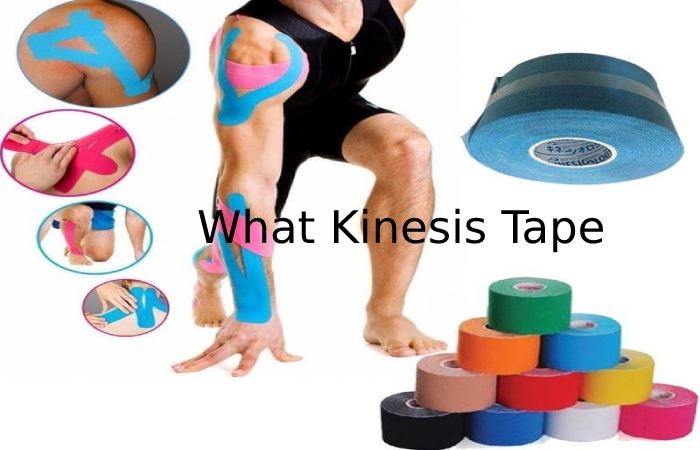Table of Contents
What is Kinesis Tape?
Kinesis Tape is a thin elastic cotton bandage that has the distinction of being able to stretch up to 130-140% of its original length.

It contains a thin layer of medical glue that adheres to the skin and allows it to breathe.
The purpose of this material with the ability to stretch is due to its traction on the affected area, correcting its correct function in cases is a range of motion.
The adhesive allows it to stay in the area and exert its effect without moving from its place; rub the tape in contact with the skin to activate its glue. For more updates please visit our website
What is Kinesiology?
Kinesis tape is an instrument custom that is nothing more than the scientific study of movement in humans.
Kinesiology is part of the multidisciplinary health team, where you can find specialists in neurology, psychology, and nutrition.
It also works in conjunction with traditional Chinese medicine.
Usually, the bands or bands are blue, but there are other varieties of colors, which developed around 1970.
The design of the tape is very similar to human skin, so it is flexible or stretchy, allowing the wound to heal quickly and naturally.
Athletes choose it because it easily adapts to the performance of any sport, and it does not limit movement.
A Little History of Kinesis Tape
The history of neuromuscular bandages dates back to the 70s. Its origin takes us to Korea and Japan with Drs. Kenzo Kasen and Murali.
These scientists had a vision where they could visualize the skin’s structure and imitate it, maintaining the body’s movement with an elastic bandage.
This type of bandage cannot limit blood circulation and maintain the arrival of proprioceptive information from the injured area.
This fact described above allows for rapid recovery of normal movement of the injured area.
It was not until 2000 that the neuromuscular bandage arrived in Spain, and it can see that the frequency of its use was only a few years ago.
How Does Kinesis Tape Work?
Can theoretically advantages achieve this type of elastic bandage. Among the benefits, it can be said, for example, that the elastic bandage can correct the alignment of weak muscles, thereby facilitating movements.
By adhering to the skin, its firmness relieves the pressure that inflammation or an injury can put on the nociceptors that detect the injury’s presence.
It stimulates the mechanoreceptors, which significantly improves proprioception and substantially improves the joints and muscles.
How Is Kinesis Tape Used?
To place the bandage, the muscle must be in a stretched state. The origin of the power must know as it begins to bandage from this area.
You must have clean, moisture-free skin, apply the bandage and rub to activate its glue, and generally adhere for a long time.
It has three ways of applying the neuromuscular bandage: the “I” shape used to the small diamond and the small circle.
The “Y” shape is cast-off for large muscles like the deltoids, and the “X” shape habit for large and long muscles like the biceps and thighbones.
This type of bandage can apply to the inflammatory areas to relieve pain and improve the inflammatory condition and mobility of the site.
Scientific Studies Confirming The Benefits Of Kinesis Tape
There is no evidence that Kinesis tape can produce improvement or cure in muscle conditions, and they have termed the progress that it makes as “insignificant.
Randomized studies have confirmed that Kinesis tape has not shown changes in its medium to long-term use in reducing blood pressure.
Conclusion
Kinesis tape is a technique that has to apply consecutively, and you could massively say this for different purposes.
Despite this, it has not shown remarkable efficacy in clinical trials, but that does not limit its practice since users who regularly use this type of dressing claim that it is good.
They also noticed its improvements in terms of pain, swelling, or muscle mobility using Kinesis tape.
Therefore, it is enough to try as an alternative to avoid more invasive treatments or ingest a considerable amount of drugs, leading to unwanted effects.
